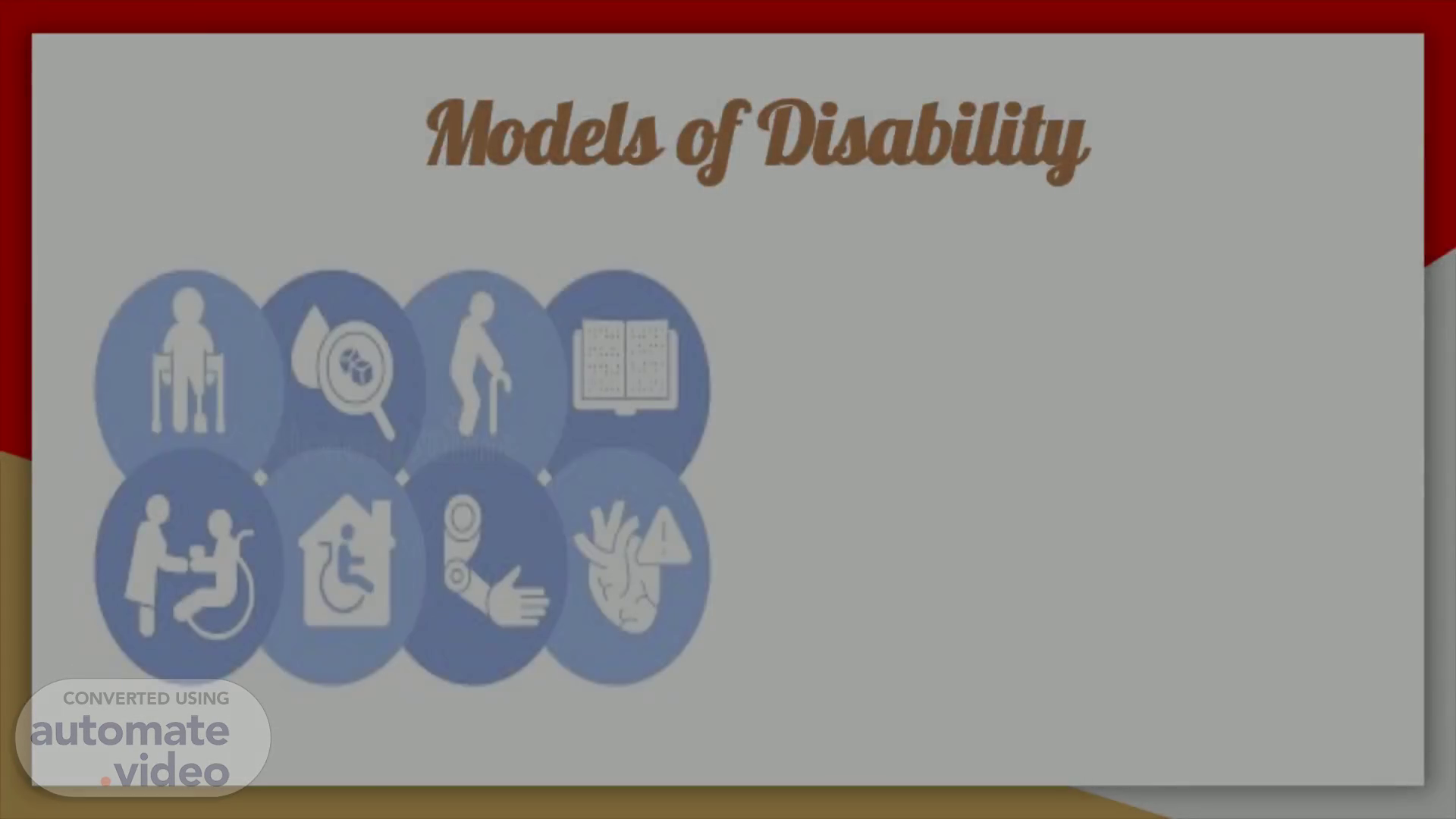
Models of Disability
Scene 1 (0s)
Models of Disability. AchieveAbility > Policy > Social model of disability.
Scene 2 (24s)
'NDACA is a £1-M Heritage Lottery Fund project, delivered by Shape Arts, which tells the radical story of the Disability Arts Movement, when a group of disabled people and their allies made great art and helped change the law'. Visit THE-NDACA.ORG or www.shapearts.org.uk to find out more about our work in breaking the barriers to creative excellence..
Scene 4 (1m 30s)
About Models. Models of disability defines person's impairment on the basis of society and practitioners in meeting diverse needs of a person. It helps to create healthy connection between citizens of the society without making misjudgments. It gives framework of reference that having a particular impairment does not make the person less functioning in broader society..
Scene 5 (2m 4s)
Medical model. Medical model defines disability as a defect with the person. It is a result of physical condition. The medical model looks at a person’s impairment first and focuses on the impairment as the cause of disabled people being unable to access goods and services or being able to participate fully in society. Statements such as ‘he can’t read that newspaper because he’s blind’ are an example of people being influenced by the medical model of disability.
Scene 6 (3m 15s)
Benefits of Medical model. This model is simple to understand Helps people to care diseases by providing proper diagnosis and treatment. Comprehensive tool for health professionals..
Scene 7 (4m 9s)
Differences between social and medical model. Medical model You cannot make decisions about your life You are the problem You are the sufferer You can never be equal to a non-disabled person Social Model • Everyone is equal Society put the barriers in place Society prevents and restricts opportunities.
Scene 8 (5m 2s)
Social model. Disability is viewed as a result of interaction with the environment. Limitations are associated within the society - mentally constructed schemas It undermines the sick role of the person. Benefits - give people independence,choice and control decisions. Improves quality of life and functional abilities..
Scene 10 (6m 25s)
Identity model. People with disabilities have lower self concept. They have negative self-esteem, self image and self actualization (Murray,2002). They have broad developmental issues which lacks to form a personal image in occupational and educational career They need to reconstruct their self image as a disabled person and reconstruct a normal life. Self identity is created by normalizing them part of a society yet a different group.
Scene 11 (7m 25s)
Benefits of Identity model. Creates an autonomous self- image of the person. Sees own self as a group of disabled bodies who can represent society at different levels. Enhances the expression of belongingness towards a broader society. Brings Unique credentials for own relationships (Ruff,2018).
Scene 12 (8m 21s)
Conclusion. Models of Disability reveals individual difference does not make the person less valued in society. It works to make society, professionals and policy makers aware of disability and to avoid misconceptions about person with disabilities by adopting best practice. All this models are in line with one another and make the person more responsive towards changes in society..
Scene 13 (9m 6s)
References. Ewin, H. (2021). Community Barriers associated with models of disability, Retrieved from https://abilityfocus.ie/blog Cramer, K. (2006). Social model Overview, Retrieved from https://pwd.org.au/resources/disability-info/social-model-of-disability/ Smart, J. F. & Smart, D. W. (2006). Models of disability: Implications for the counseling profession. Journal of Counseling and Development, 84, 29-40 . Introduction to the social & medical models of disability , notes from Zikura International College, 2021.
Scene 14 (9m 17s)
abstract. SHANK you.